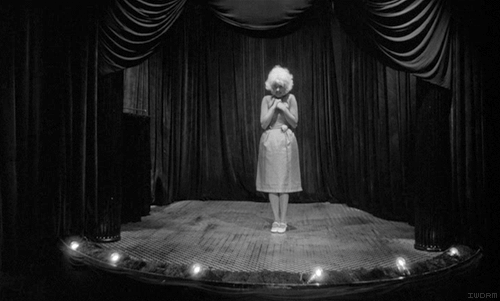Before Twin Peaks (1990), Blue Velvet (1986) and The Elephant Man (1980), David Lynch produced his most surreal and enigmatic motion picture, which just happened to be his first feature-length film: Eraserhead (1977).
Released in 1977, after no less than 5 years in the making, Eraserhead developed a cult following and contributed to the midnight movie craze now synonymous with such films as Night of the Living Dead (1968), El Topo (1970) and The Rocky Horror Picture Show (1975).
The film is set in Lynch’s bleak vision of a heavily-industrialised metropolis, where the shadows hide a darkness that certainly belongs to the depths of a nightmare. Our protagonist, Henry Spencer, is the very shape of uncertainty and confusion, with the responsibilities of adult life a constant concern for him – and perhaps the cause of his striking high-top hair and despairing puppy-dog eyes.
A single, iron frame bed fills Henry’s bedsit apartment, which comes with a window on-looking a thick brick wall and a menacing radiator prone to making whirling, industrial noises. He looks for a torn photo of a pretty girl and sets out into the darkness, across the train tracks, to find her. Once invited in for dinner with the girl’s parents, what ensues is a spiralling, ever-more disturbing, hazy trip into the depths of man’s perennial fears of fatherhood, made all the more horrific by the deformed, alien-like baby that takes hold of his world in the latter part of the film.
The deformed, disabled and grotesque are often integral to Lynch’s work, from John Merrick in The Elephant Man to the one-armed man in Twin Peaks. It is not widely known that Lynch’s first child, Jennifer, was born with severely clubbed feet requiring extensive surgery and waist-high casts as a baby. Perhaps it was this experience (which his daughter subsequently overcame) that laid the foundations for this work of most peculiar and unnerving sentiment. Lynch’s experiences in gritty 1970s Philadelphia would certainly have fed into his fascination with physical and emotional violence, which is so acutely represented in the nightmarish scenes of Eraserhead. From witnessing a murder in front of his house to defending his wife and baby from intruders with a military sword, Lynch himself encountered petrifying situations that would have fed the dark imagination that created Eraserhead and its petrified protagonist, Henry Spencer.
The unforgettable, surrealistic and utterly disturbing scenes of this midnight-movie will end up etched in some dark caveat of the viewer’s mind; images matched only by the film’s haunting and tense soundscape, which may echo long after the film’s credits.




